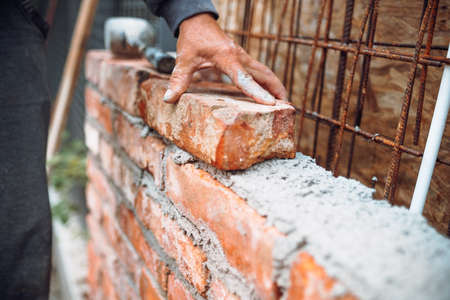1. Understanding the UK’s Rainy Climate
When it comes to weatherproofing your shed, it’s essential to first understand the unique climate challenges faced across the UK. Known for its frequent rainfall, high humidity, and unpredictable weather patterns, the British climate can be particularly tough on outdoor structures like sheds and outbuildings. Unlike homes, these buildings often lack the robust construction and insulation needed to withstand persistent dampness and driving rain. As a result, water ingress, rot, mould, and warping are common issues that plague garden sheds from Cornwall to the Highlands. Recognising how susceptible your outbuilding is to the elements is the crucial first step in planning effective weatherproofing measures. This awareness allows you to anticipate problems before they arise and ensures your shed stays dry and durable throughout even the wettest British seasons.
2. Assessing Your Shed’s Current Condition
Before you can effectively weatherproof your shed against the UK’s notoriously wet climate, it’s crucial to first assess its current state. Taking the time to thoroughly inspect your outbuilding will help you identify existing issues such as leaks, rot, and structural weaknesses that could allow moisture to seep in. Here’s how to carry out a comprehensive evaluation:
Key Areas to Inspect
Begin by checking both the exterior and interior of your shed for any signs of trouble. Use the table below as a handy checklist during your inspection.
| Area | What to Look For |
|---|---|
| Roof | Missing or damaged felt, cracked tiles, sagging sections |
| Walls & Cladding | Warped panels, gaps, visible rot, peeling paint |
| Windows & Doors | Broken seals, draughts, swelling wood, rusted hinges |
| Floor | Damp patches, soft spots, evidence of mould or mildew |
How to Identify Moisture Issues
- Check for musty smells which often indicate hidden dampness.
- Look closely at corners and joints where water can easily penetrate.
- If you spot discolouration on timber or rust on metal fixings, these are clear signs of prolonged exposure to moisture.
Common Weak Spots in UK Sheds
Sheds in Britain often suffer from weak points due to our variable weather. Pay particular attention to:
- The roof ridge and eaves where rainwater can pool and seep through.
- Bases where sheds meet the ground – poor drainage can cause rising damp.
Tackling Found Issues
If you uncover any faults during your assessment, note them down for repair before moving forward with weatherproofing measures. Addressing these vulnerabilities now will ensure your efforts are long-lasting and truly effective against the British rain.

3. Essential Weatherproofing Materials and Tools
Ensuring your shed stands up to the UK’s famously unpredictable weather starts with choosing the right materials and tools. Here’s a comprehensive guide to the best products widely available across Britain for robust, long-lasting protection against rain, wind, and damp.
Sealants: Keeping Out Moisture
High-quality exterior sealants are vital for filling gaps and joints where water could seep in. Look for flexible, waterproof silicone or polyurethane sealants specifically formulated for outdoor use in the UK climate. Brands such as Everbuild and Soudal offer reliable options easily found at B&Q or Screwfix.
Weatherproof Paints and Wood Preservers
Applying a durable, weather-resistant paint or wood preserver is essential for protecting wooden sheds from rot and mould. Opt for products labelled as “microporous” so timber can breathe while repelling water. Leading British brands like Ronseal and Cuprinol offer paints and stains tailored for sheds and fences that not only shield but also enhance appearance.
Roofing Felt and Membranes
The roof is your first line of defence. Traditional bitumen roofing felt remains popular thanks to its affordability and ease of installation—look for heavy-duty options rated for UK conditions. For longer-lasting protection, consider breathable roofing membranes such as Tyvek or Permavent, which prevent leaks while allowing moisture vapour to escape.
Guttering Kits
Installing proper guttering directs rainwater away from your shed’s base, preventing pooling and subsequent damage. Complete gutter kits are available at most DIY shops; ensure you select UV-stabilised plastic suited to withstand Britain’s variable weather.
Essential Tools for the Job
Stock up on quality brushes, rollers, a caulking gun for sealant application, a utility knife for trimming felt, and a staple gun or galvanised nails for securing roofing materials. Investing in these tools will make your weatherproofing project more efficient and deliver longer-lasting results.
By selecting proven materials and using the correct tools, you’ll give your outbuilding the best possible chance of standing strong through many a British downpour.
4. Practical Steps to Weatherproof Your Shed
Weatherproofing your shed in the UK means more than just a quick fix; it requires a systematic approach tailored to withstand persistent rain, wind, and damp. Here’s a step-by-step guide to sealing, insulating, and reinforcing your outbuilding, ensuring it stands strong against the British elements.
Step 1: Inspect and Seal Gaps
Begin by thoroughly inspecting your shed for any gaps or cracks in the walls, roof, and around windows and doors. Use a high-quality exterior sealant or weatherproof caulk to fill these gaps. Pay extra attention to corners and joints where water ingress is most likely.
Step 2: Treat and Protect Timber
Apply a wood preservative or weatherproof paint specifically designed for British conditions. This will prevent rot and extend the lifespan of your shed. Reapply treatments every couple of years or after particularly harsh winters.
Step 3: Upgrade Roofing Materials
Replace worn felt with heavy-duty roofing felt or consider EPDM rubber roofing for increased durability. Ensure overhangs are adequate to direct rainwater away from the shed walls.
Comparison of Roofing Options
| Material | Durability | Cost | Maintenance |
|---|---|---|---|
| Standard Felt | Moderate | Low | Annual checks required |
| Heavy-duty Felt | High | Medium | Reapply every 5-7 years |
| EPDM Rubber | Very High | Higher | Minimal, up to 20 years lifespan |
Step 4: Improve Drainage Around the Shed
Add guttering to direct rainwater away from the base. Consider installing a gravel trench or French drain around the perimeter to stop standing water from pooling, which can cause damp issues inside.
Step 5: Insulate for Damp Protection
Add insulation boards or breathable membrane on internal walls. For sheds used as workshops or offices, line the interior with moisture-resistant plasterboard and consider underfloor insulation. Use vapour barriers where necessary to prevent condensation build-up.
Shed Insulation Materials Comparison
| Material | Main Benefit | Shed Suitability (UK) |
|---|---|---|
| PIR Boards | High thermal resistance | Excellent for year-round use |
| Batt Insulation (Mineral Wool) | Damp resistant, affordable | Good for seasonal sheds/workshops |
| Bubble Foil Wrap | Easy install, reflective layer repels moisture | Ideal for basic weatherproofing needs |
Step 6: Reinforce Doors and Windows
Add weatherstripping around doors and fit draught excluders at thresholds. For windows, use double glazing if possible or apply clear plastic film as an affordable alternative during colder months.
Tackling these steps methodically ensures your shed stays dry, secure, and functional throughout the UK’s unpredictable rainy seasons—helping you avoid costly repairs while making your outbuilding truly weatherproof.
5. Regular Maintenance and Aftercare
Even the most thoroughly weatherproofed shed requires consistent care to remain resilient against the UK’s famously unpredictable weather. To ensure your outbuilding stands strong all year round, create a maintenance schedule that aligns with the changing seasons and addresses the specific challenges of each.
Seasonal Checks
Begin with a comprehensive inspection at least twice a year—ideally in early spring and late autumn. Look for signs of water ingress, such as damp patches, mould, or warped timber, particularly after periods of heavy rainfall. Pay close attention to the roof covering, felt seams, window seals, and door frames for any emerging weaknesses.
Simple Repairs to Address Promptly
If you spot minor damage like loose roofing felt, cracked panes, or missing sealant, address these issues promptly before they escalate into costlier problems. Replace damaged roofing material, reapply waterproof sealants, and treat any exposed wood with a suitable preservative. Keeping gutters clear of leaves and debris will also prevent water from pooling around your shed base.
Essential Maintenance Routines
Beyond repairs, adopt essential routines such as repainting or re-staining timber every couple of years to maintain its protective barrier against moisture. Lubricate door hinges and window latches to prevent rusting, and regularly check ventilation grilles to avoid condensation build-up inside the shed. For added peace of mind during winter, consider placing silica gel packs or moisture absorbers inside to combat excess dampness.
By sticking to these regular checks and simple upkeep tasks, you’ll ensure your shed remains weatherproofed throughout the year—ready to face whatever British weather throws its way.
6. Common Mistakes to Avoid
Even with the best intentions, many UK shed owners fall into common traps when weatherproofing their outbuildings. By recognising these pitfalls, you can ensure your shed stands up to the British weather for years to come.
Neglecting Regular Inspections
One of the biggest mistakes is treating weatherproofing as a one-off task. The UKs persistent rain and unpredictable temperature changes can quickly wear down protective measures. Make it a habit to inspect your shed at least twice a year—ideally in spring and autumn—to catch any issues before they become serious problems.
Using Inappropriate Materials
Opting for cheap or unsuitable materials can be tempting but often leads to disappointment. For example, using interior-grade sealants or untreated timber won’t hold up against prolonged dampness. Always choose products designed specifically for outdoor use and suited to the UK climate, such as bitumen felt for roofing and pressure-treated timber for walls and floors.
Overlooking Proper Ventilation
In an effort to keep water out, some shed owners seal every possible gap, inadvertently trapping moisture inside. This can result in mould, rot, and an unpleasant musty smell. Make sure your shed has adequate ventilation—consider installing air vents or leaving small gaps above doors and windows to allow airflow without letting in rain.
Ignoring the Shed Base
A solid, raised base is essential in preventing ground moisture from seeping into your shed. Placing your outbuilding directly on soil or grass is a recipe for dampness and decay. Instead, use paving slabs, concrete bases, or treated wooden bearers to keep your structure elevated and dry.
Skipping Gutter Maintenance
If your shed has gutters, failing to clear them regularly can cause overflow and water damage along the sides of your building. Remove leaves and debris at least once each season—especially after autumn—to keep rainwater flowing away from your shed’s foundation.
How to Ensure Long-Lasting Results
The key to effective weatherproofing is regular maintenance combined with quality materials and proper installation techniques. Stay vigilant for early signs of wear, invest in products built for British weather conditions, and never cut corners on preparation or follow-up care. With these practices in place, your shed will remain a dry, secure haven no matter what the UK skies have in store.


